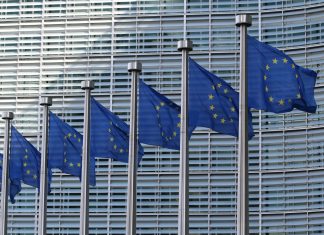The GRI and the European Financial Reporting Advisory Group (EFRAG) are making strides in aligning the ESRS with GRI Standards.
Position Green recently took the time to explain how companies can navigate evolving ESRS and GRI standards.
This collaboration aims to lighten the reporting load for Europe’s businesses while streamlining sustainability standards. The recent agreement between GRI and EFRAG is a boon for GRI reporters, as it prepares them for the impending ESRS mandates under the Corporate Sustainability Reporting Directive (CSRD), facilitating a smooth integration into existing reporting processes.
The ESRS and GRI share a common ground in their approach to impact materiality, focusing on both potential and actual negative impacts on people and the environment, emphasizing the importance of scope, scale, and irreversibility. Additionally, ESRS sheds light on financial materiality, evaluating how environmental, social, and governance (ESG) issues affect value creation. The DMA, a cornerstone of the CSRD, serves as an ideal starting point for transitioning to ESRS reporting. Companies with prior experience in GRI impact assessment find themselves well-positioned to embrace ESRS requirements.
Companies fretting over mismatched material topic names between previous DMAs and ESRS need not worry. The ESRS guidelines clarify that alignment of material topic names with ESRS topics isn’t mandatory during materiality determination or reporting phases. What matters are the ESRS disclosures themselves. For example, a company’s self-chosen topic like “Employee Wellbeing” might encompass relevant ESRS disclosures for health and safety. Utilizing EFRAG’s extensive list of data points and the GRI-ESRS Interoperability Index can greatly simplify the transition for reporting companies.
Incorporating your ESRS sustainability statement into your next Annual Report is an excellent way to preview upcoming changes. It’s an approachable step towards complete compliance in the subsequent year. Building your report around the ESRS recommendations, even if it’s not perfect the first time, provides valuable insights into the reporting process.
Calum Revfem, Director of Reporting at Position Green, emphasizes the importance of linking ESRS disclosures to the core business strategy, stating, “When making ESRS disclosures, ensure there is a consistent narrative linking the information to your core business strategy. This demonstrates that you have integrated ESG factors into your value creation processes. It also provides useful context and shows a level of ESG maturity beyond taking compliance-only actions.”
Integrated reporting requires a larger project team, each with clear ownership within their respective areas – risk, strategy, communications, and sustainability
Engaging these teams early on, clarifying their roles, and providing targeted training are crucial for a seamless reporting process. The CFO and Head of Sustainability play pivotal roles in ensuring that these teams are fluent in both finance and sustainability languages required for ESRS reporting.
Viewing sustainability reporting as more than just a compliance task is key. It should be a tool for creating value for your organisation. The aim is to produce a report that is not only compliant but also engaging and reflective of your company’s unique sustainability ethos.
This approach appeals to a broad range of investors and stakeholders. By judiciously selecting disclosures, you can incorporate new elements that elevate your report. Leveraging your sustainability statement can lead to long-term impacts beyond mere compliance.
Read the full post here.
Copyright © 2024 RegTech Analyst
Copyright © 2018 RegTech Analyst






